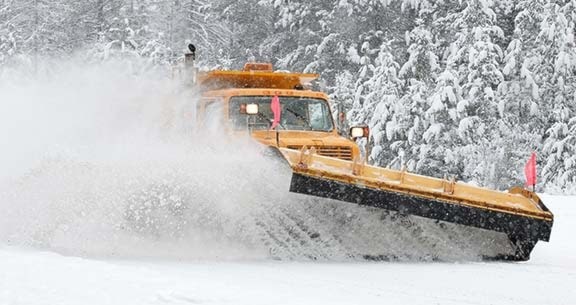The Regional District of East Kootenay got a sense of how the Ministry of Transportation is enforcing standards on winter road maintenance following a presentation to the board last Friday.
Ron Sharp, the Rocky Mountain district manager for the ministry, spoke to the board about increased standards and enforcement for a new seven-year contract that was signed last April with Mainroad East Kootenay Contracting — the contractor charged with keeping roads and highways clear over the winter months.
Sharp says the new contract contains stricter specifications on response times to winter storms as well as increased monitoring and inspection protocols
“We have seen a trend of improvement over the winter months,” said Sharp. “I think anyone who has observed, and certainly the response we’ve received from the public, is that as winter has gone on, and as Mainroad East Kootenay has gotten their feet up underneath them in this new contract and these new specifications, is they’ve met the challenge and are continuing to.”
It’s been a long winter that has set new snowfall records in Cranbrook and the Elk Valley, which carries challenges in keeping the 1,800 road kilometres within the district bare and clear of snowfall.
Over the last two years, there have been an average of 16 snowfall events of three centimetres or over, however, that number has doubled to over 33 this year.
Roads are classified in ranked priority from A to F; at the top of the scale are the the high-traffic routes such as highways, while rural roads are lower down the ladder.
Some changes from the old contract to the new contract include full snow removal within a day on Class A roads when temperatures are above nine degrees, as opposed to two days in the old contract. For Class C roads, snow removal now has a two-day deadline as opposed to seven days from the old contract.
Changes were also made to the size of sand and abrasive on the roads, decreasing from 12.5 millimetres to nine millimetres.
Sharp says the ministry has an extensive monitoring and auditing system to hold the contractor accountable.
“This is an end-product specification contract, but we also want to see how things are done to make sure they match with what the maintenance contractor said they were going to do under their quality management system,” Sharp said.
In December, the Ministry had 900 records for A and B Class roads, showing that the contractor had met or exceeded standards by 96 per cent, while rural roads were at 79 per cent. The next month in January, those numbers jumped from 99 per cent on A and B Class roads, and 88 per cent on rural roads.
“So what we’ve seen is constant or continual improvement in terms of the maintenance contractors response and ability to make or exceed ministry specifications as the winter has gone on,” Sharp said.
RDEK board chair Rob Gay said his fellow directors appreciated the update as many Area Directors represent rural regions that fall under the responsibility of the contractor.
“They’ve tightened up a lot of things, we also learned there are a lot of inspections,” Gay said. “Their staff is on the road very quickly after storms. The general consensus and the report showed that things are improving and we all noticed that.”
